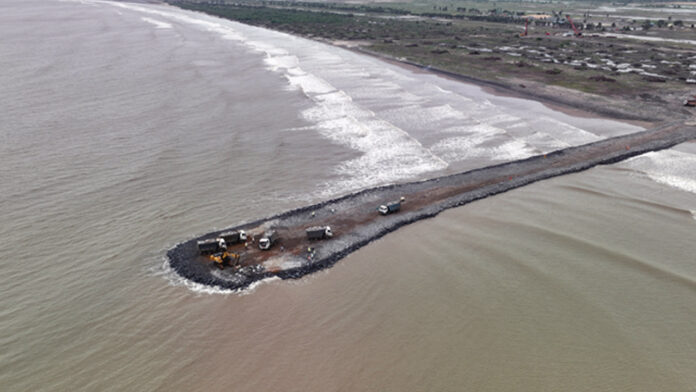In a historic endeavour set to redefine India’s maritime landscape, the Andhra Pradesh Maritime Board (AP Govt.) is spearheading the ambitious development of the Machilipatnam port. Nestled along the picturesque Bay of Bengal in Krishna District, Andhra Pradesh, this project marks a significant milestone as it brings the ocean to the land for the first time ever in India.
What makes the Machilipatnam port unique is not just its location, but also the nature of its terrain. Unlike traditional ports built on solid soil, this port is being constructed on clay and wetlands, presenting a distinctive set of challenges and opportunities. As a result, the design and execution of this project stand apart from conventional port development initiatives.
Spanning an expansive area of 2000 acres, the Machilipatnam port project encompasses a wide range of infrastructure facilities. The main construction covers 1700 acres, while an additional 234 acres are allocated for other ancillary facilities.
With a total goods uploading and unloading capacity of 35 million tonnes, the port boasts four berths, each stretching an impressive 1200 meters. Three berths cater to all types of goods, while one berth is dedicated specifically for coal handling. Notably, the port can accommodate ships with a maximum capacity of 80,000 tonnes, underscoring its capability to handle large vessels with ease.
Key features of the port’s infrastructure include an approach channel with dimensions of 13 km in length, 450 meters in width, and a depth of 17 meters. The south breakwaters, spanning 2 km in length and filled with 9 lakh metric tonnes of rock, provide essential protection and stability to the port. Similarly, the north breakwaters, measuring 250 meters in length and filled with 60000 metric tonnes of rock, serve as vital barriers against the forces of the sea.
To prepare the land for construction, extensive sand removal operations are underway, employing methods such as trailer suction and cutter suction. A staggering 60 lakhs cubic meters of sand and soil will be removed and replaced with soil, black gravel, stones, and sand to reinforce the land. Additionally, 10 lakhs metric tonnes of core materials, including stone, black stone, sand, and cement, are being utilised in the construction process.
A key component of the port’s infrastructure is the diaphragm wall, comprising 65,000 metric tonnes of concrete. This wall serves as a robust and watertight barrier, essential for containing water and ensuring the port’s structural integrity. With a total volume of 2 lakh cubic meters of reinforced concrete under the sea, the Machilipatnam port stands as a testament to modern engineering prowess.
Incorporating innovative techniques and cutting-edge technology, the Machilipatnam port is poised to emerge as a symbol of India’s maritime progress. As it navigates the challenges of its unique landscape, this landmark project is set to redefine the nation’s port infrastructure and bolster its position as a maritime powerhouse on the global stage.
